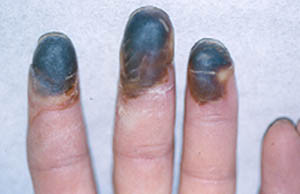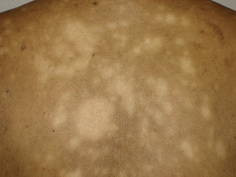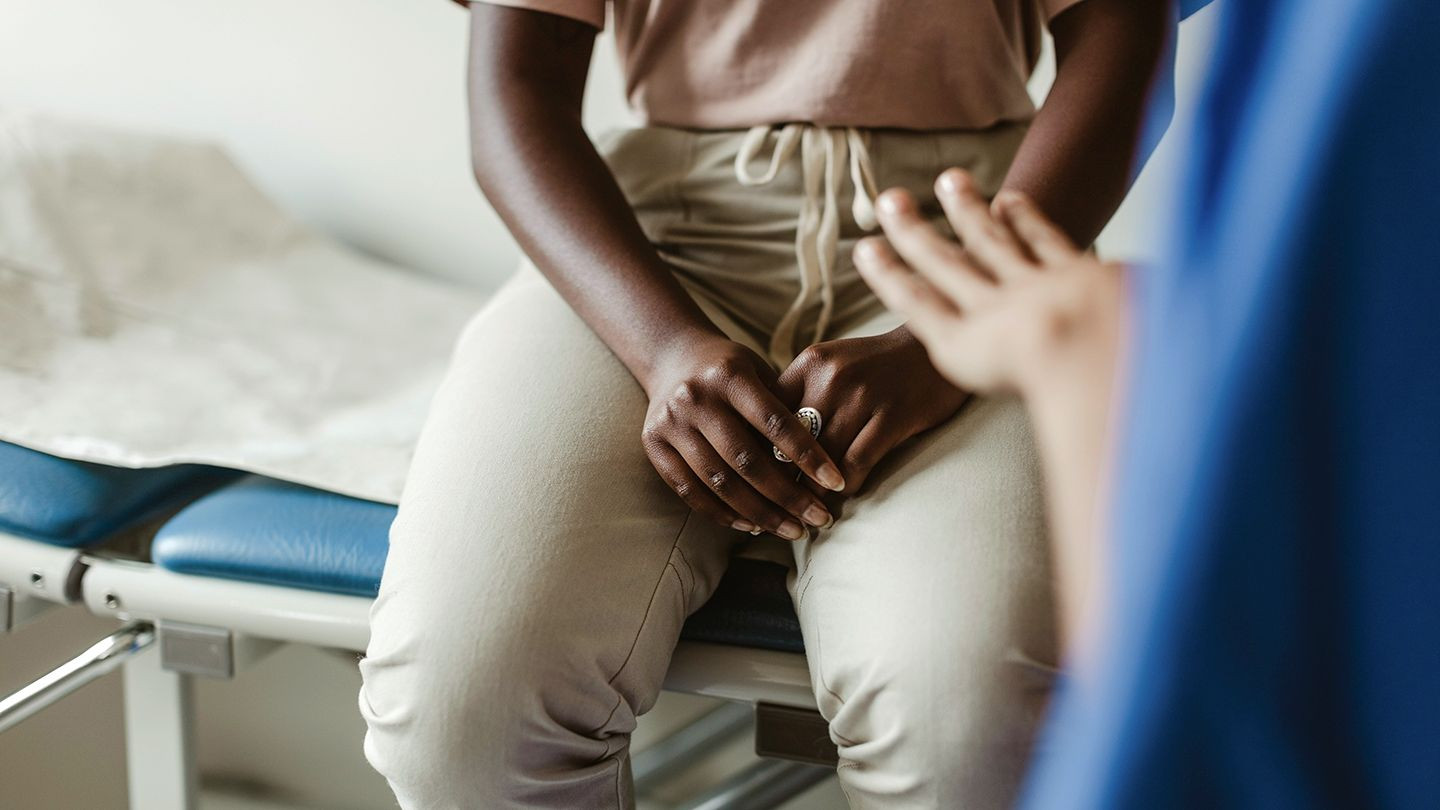Definisi
Penyakit Buerger, atau yang disebut juga dengan tromboangitis obliterans, merupakan suatu peradangan pada pembuluh darah yang berukuran kecil dan sedang. Pada dasarnya, penyakit Buerger dapat terjadi pada pembuluh darah mana saja, tetapi biasanya terjadi pada pembuluh darah di lengan, kaki, jari tangan, dan jari kaki. Peradangan pada pembuluh darah akan membuat darah Anda sulit mengalir melewati pembuluh dan bekuan darah juga dapat terbentuk, sehingga bisa menimbulkan sumbatan dalam pembuluh darah. Sebagai akibatnya, Anda dapat mengalami rasa sakit dan mengalami kerusakan pada jaringan yang dimulai dari jari tangan dan kaki dan dapat menyebar hingga ke kaki dan lengan Anda.
Penyakit Buerger termasuk penyakit pada pembuluh darah yang cukup langka. Penyakit ini dapat ditemukan di seluruh dunia dan dapat memengaruhi orang-orang dari semua ras dan kelompok umur. Namun, penyakit ini biasanya menyerang pria Asia dan Timur Tengah yang berusia antara 40 hingga 45 tahun yang sering menggunakan produk tembakau, seperti merokok dan tembakau kunyah.
Penyebab
Penyebab pasti penyakit Buerger belum diketahui secara jelas. Penelitian menunjukkan terjadinya penyakit Buerger berhubungan dengan kebiasaan merokok atau penggunaan tembakau, meskipun mekanisme pengaruhnya belum diketahui dengan pasti. Diperkirakan bahwa bahan kimia dalam tembakau dapat mengiritasi lapisan pembuluh darah. Selain itu, para ahli menduga bahwa beberapa orang mungkin memiliki kecenderungan genetik terhadap penyakit ini. Mungkin juga penyakit ini disebabkan oleh respons autoimun di mana sistem kekebalan tubuh secara keliru menyerang jaringan yang sehat.
Perjalanan penyakit Buerger dimulai dengan terjadinya pembengkakan pada pembuluh nadi (arteri) yang berukuran sedang dan kecil, serta pembentukan bekuan darah di dalam pembuluh darah Anda. Keadaan ini akan menurunkan peredaran aliran darah pada area tangan dan kaki Anda. Lama-kelamaan, kondisi ini dapat menyebabkan kematian pada jaringan karena jaringan kekurangan nutrisi dan oksigen yang seharusnya diantarkan darah.
Faktor Risiko
Beberapa faktor yang dapat meningkatkan risiko Anda mengalami penyakit Buerger’s, antara lain:
1. Usia
Penyakit ini sering muncul untuk pertama kali pada orang yang berusia kurang dari 45 tahun.
2. Jenis Kelamin
Penyakit Buerger jauh lebih sering terjadi pada pria daripada wanita. Perbedaan ini mungkin terkait dengan kebiasaan merokok yang lebih tinggi pada pria dibandingkan wanita.
3. Penggunaan Tembakau
Kebiasaan merokok akan sangat meningkatkan risiko penyakit Buerger. Akan tetapi, penyakit Buerger dapat terjadi pada orang yang menggunakan segala bentuk tembakau, tidak hanya rokok saja, seperti penggunaan cerutu dan tembakau kunyah. Orang yang menggunakan rokok linting dari tembakau mentah dan mereka yang merokok lebih dari satu bungkus setengah rokok sehari mungkin memiliki risiko penyakit Buerger paling tinggi. Angka kejadian penyakit Buerger paling tinggi terdapat di daerah Mediterania, Timur Tengah, dan Asia di mana tingkat perokoknya masih tinggi.
4. Penyakit Gusi Kronis
Infeksi jangka panjang pada gusi telah dikaitkan dengan perkembangan penyakit Buerger, meskipun dasar hubungannya masih belum jelas.
Gejala
Gejala penyakit Buerger biasanya berlangsung untuk waktu yang singkat, sekitar satu sampai empat minggu, dan kemudian akan mereda untuk sementara waktu. Gejala penyakit Buerger dapat meliputi:
- Kesemutan atau mati rasa di tangan atau kaki
- Tangan atau kaki menjadi pucat, kemerahan, atau berwarna kebiruan
- Rasa sakit yang mungkin hilang timbul pada kaki atau di lengan dan tangan Anda
- Dapat timbul saat Anda menggunakan atau menggerakkan tangan atau kaki
- Mereda saat Anda menghentikan aktivitas pencetus nyeri, atau saat Anda sedang beristirahat
- Peradangan di sepanjang pembuluh darah balik (vena) tepat di bawah permukaan kulit (karena adanya bekuan darah di pembuluh darah vena)
- Jari tangan dan kaki menjadi pucat saat terkena dingin
- Luka terbuka yang menyakitkan pada jari tangan dan kaki
Selain itu, terdapat beberapa gejala tambahan jika penyakit Buerger’s telah terjadi selama beberapa waktu, seperti:
- Kram otot
- Pembekuan darah di pembuluh darah
- Jari tangan atau kaki merah, biru, atau pucat
- Biru di sebagian wajah
- Kaki atau tangan dingin atau mati rasa
- Timbulnya gangren (kematian pada jaringan akibat kurangnya suplai oksigen dan nutrisi dari darah)
- Tukak pada kulit
Diagnosis
Dalam mendiagnosis penyakit Buerger, dokter akan mulai dengan melakukan wawancara dengan Anda. Dokter akan menanyakan gejala-gejala apa saja yang Anda alami, serta faktor-faktor risiko yang mungkin Anda miliki. Selanjutnya, dokter akan melakukan pemeriksaan fisik. Dokter akan memeriksa daerah kaki atau tangan yang terkena untuk melihat adakah pembengkakan atau perubahan warna yang terjadi.
Pada dasarnya, diagnosis penyakit Buerger dapat ditegakkan berdasarkan hasil wawancara dan pemeriksaan fisik, karena penyakit Buerger memiliki tampilan klinis yang cukup khas. Namun, dokter juga mungkin akan melakukan pemeriksaan penunjang untuk menyingkirkan kemungkinan penyakit lain. Beberapa pemeriksaan penunjang tersebut, meliputi:
1. Tes Allen
Pemeriksaan ini adalah tes dasar untuk menilai aliran darah. Pertama, Anda akan diminta untuk mengepalkan tangan dengan keras, untuk mendorong darah keluar dari tangan Anda. Kemudian, dokter akan menekan pembuluh nadi pada pergelangan tangan Anda untuk memperlambat aliran darah kembali ke tangan Anda. Pada titik ini, tangan Anda akan menjadi pucat. Saat Anda membuka tangan, dokter akan melepaskan tekanan pada pembuluh nadi di satu sisi pergelangan tangan Anda dan kemudian di sisi lainnya. Jika dibutuhkan beberapa saat agar tangan Anda kembali ke warna biasanya, hal ini mungkin pertanda dari penyakit Buerger.
2. Angiogram
Sejenis pemeriksaan dengan sinar-X untuk melihat pembuluh darah yang tersumbat di lengan dan kaki Anda. Dokter akan memasukan sebuah tabung tipis, yang disebut kateter, ke dalam pembuluh nadi Anda. Kemudian akan dimasukkan zat pewarna ke dalam arteri dan dengan cepat dilakukan pemeriksaan dengan sinar-X untuk melihat pembuluh darah Anda. CT-scan atau MRI juga dapat menghasilkan gambar yang serupa.
3. Tes Darah
Pemeriksaan ini dapat membantu dokter menyingkirkan kemungkinan penyakit lain. Dokter mungkin ingin memeriksa kondisi seperti diabetes, lupus, dan gangguan yang menyebabkan pembekuan darah.
Tata Laksana
Tidak terdapat obat yang dapat menyembuhkan penyakit Buerger sepenuhnya. Namun, satu-satunya faktor terpenting dalam memperbaiki gejala dan mencegah perkembangannya adalah dengan berhenti merokok dan tidak menggunakan produk tembakau lainnya. Terapi lain yang dapat membantu meningkatkan aliran darah dan mengurangi rasa sakit, termasuk:
- Obat untuk memperlebar pembuluh darah atau obat lain untuk menghancurkan bekuan darah
- Latihan jalan kaki
- Memberikan kompresi atau tekanan berkala pada lengan dan kaki Anda
- Prosedur pembedahan untuk memotong saraf pada daerah yang terkena (simpatektomi)
- Dokter juga mungkin perlu mengamputasi sebagian atau seluruh area pada tangan atau kaki yang mengalami kematian jaringan
Komplikasi
Seiring waktu, penyakit Buerger dapat memperlambat dan benar-benar menghentikan aliran darah ke jari tangan dan kaki Anda. Hal ini dapat menyebabkan timbulnya gangren, yang berarti kulit dan jaringan di jari kaki dan jari tangan Anda mulai mati. Jaringan tersebut akan mati rasa dan menjadi biru atau hitam. Jika Anda memiliki gangren, dokter biasanya harus mengamputasi bagian tubuh yang terkena. Dalam kasus yang jarang terjadi, penyakit Buerger juga dapat menyebabkan stroke atau serangan jantung.
Pencegahan
Cara terbaik untuk mencegah penyakit Buerger adalah dengan berhenti merokok dan tidak menggunakan produk-produk tembakau lainnya, seperti tembakau kunyah.
Kapan Harus ke Dokter
Konsultasikan diri Anda ke dokter jika mengalami gejala-gejala yang mengarah ke penyakit Buerger.
Mau tahu informasi seputar penyakit lainnya? Cek di sini, ya!
- dr Hanifa Rahma
Buerger’s Disease. (2021). Retrieved 7 April 2022, from https://www.mayoclinic.org/diseases-conditions/buergers-disease/symptoms-causes/syc-20350658
Buerger’s Disease. (2021). Retrieved 7 April 2022, from https://my.clevelandclinic.org/health/diseases/21680-buergers-disease
Kahn, A. Buerger’s Disease. (2017). Retrieved 7 April 2022, from https://www.healthline.com/health/thromboangiitis-obliterans
Qaja, E., et al. Buerger Disease. (2022). Retrieved 7 April 2022, from https://www.ncbi.nlm.nih.gov/books/NBK430858/
Ratini, M. Buerger’s Disease (Thromboangitis Obliterans). (2022). Retrieved 7 April 2022, from https://www.webmd.com/a-to-z-guides/what-is-buergers-disease
Travers, C. An Overview of Buerger’s Disease. (2022). Retrieved 7 April 2022, from https://www.verywellhealth.com/buergers-disease-overview-4571052












